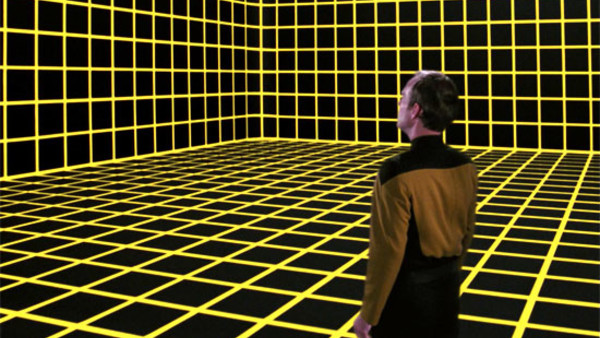9 Mind-Blowing Tech Projects That Prove The Future Is Now
Robots that love us back AND fly fighter jets? The future is thrilling, and it's happening now.

Open your eyes. It’s morning, and you’re lying in bed. Your trusty dog is curled up beside you, snoring. You issue a silent command and a 3D image of his dream pops into your view… he’s chasing rabbits. Cybernetic rabbits, for a cybernetic dog.
You send a mental command to your servant, and his mechanical frame enters immediately with hot coffee and your favourite breakfast. “So very good to see you this morning, Sir,” the robot proclaims. He is genuinely happy you’re awake and well. You issue another mental command and your bedroom transforms into a breakfast nook. A good holodeck does wonders for a small apartment!
In response to your thoughts, the news turns on. The news caster stands in 3D as you eat your breakfast. “The first reports from Alpha Centauri arrived today, confirming scientists speculations that planet Alpha Centauri B does in fact have an atmosphere suitable for life. Early analyses suggest the presence of several microbial species on the planet’s surface. In other news…” the newscaster disappears as your attention switches to your plans for the day.
Sound like science fiction? Actually, this is just a regular day in your future.
Forty-seven years ago this month we put men on the moon with computers no more powerful than a pocket calculator. Today, every one of us walks around with a device that is millions of times more powerful than all of NASA’s computers at the time combined. And Google already has a computer 100 million times more powerful than the one I’m writing this article on.
From telepathically-controlled computers to cybernetic animals to holodecks, there are plenty of science fiction-worthy developments underway that will revolutionize reality within our lifetimes. Here are nine of the best...
9. Mind-Controlled Machines

Harvard Medical School is on a roll with it’s telepathic technology. Not content to stick to person-to-person communication, HMS has developed BrainGate, which is a neural implant the size of a baby aspirin. This set of electrodes sits inside the brain of a quadriplegic, and monitors signals that would correspond with limb movement in order to move a mouse pointer on a computer screen.
Although the intention is to give people with limited mobility a better quality of life, this technology represents a first real step in human-brain-to-computer technology.
Imagine waking up in the morning, telepathically turning on the coffee pot then mentally sorting through your new emails while lying in bed. This could be a reality in our lifetime, thanks to BrainGate.